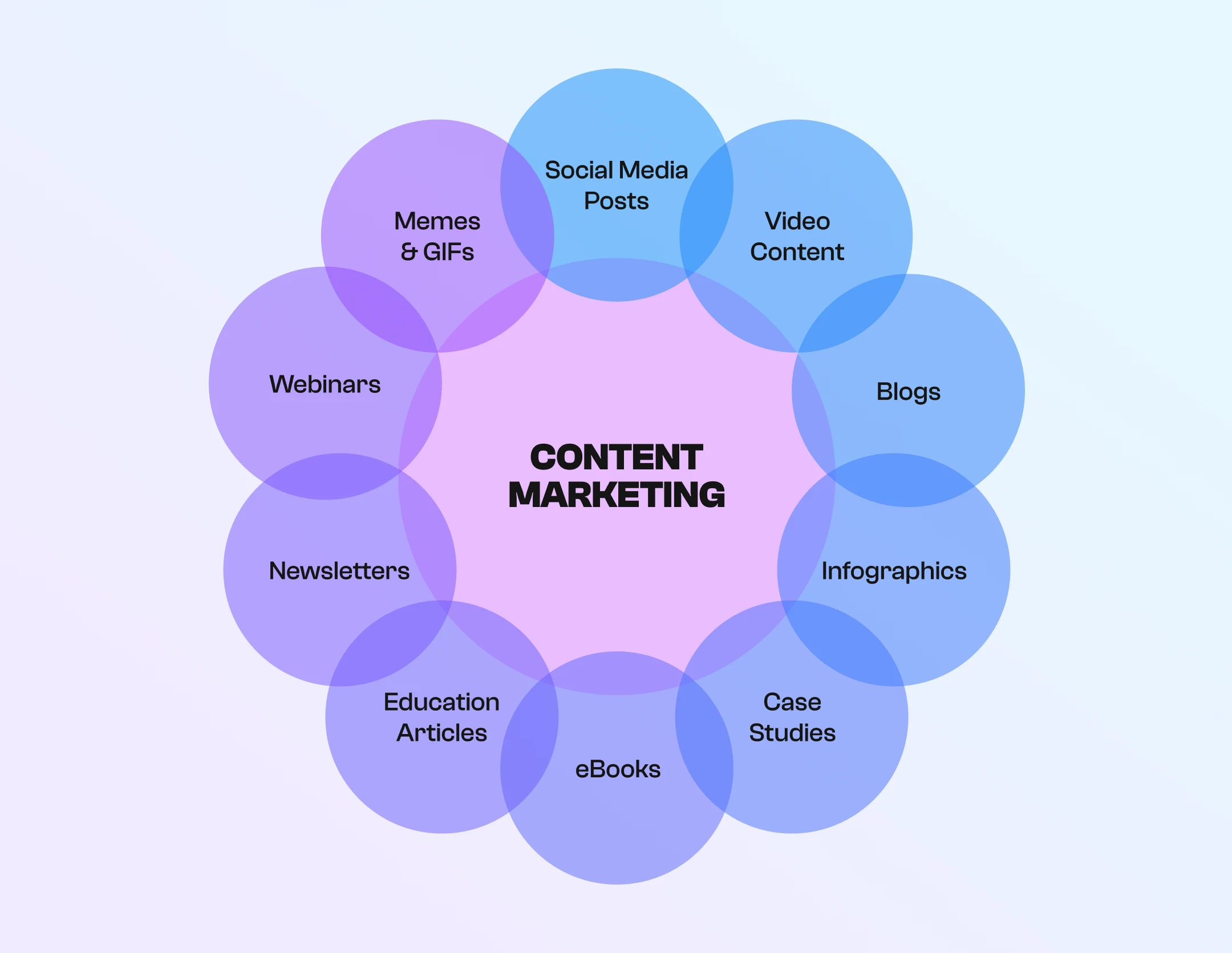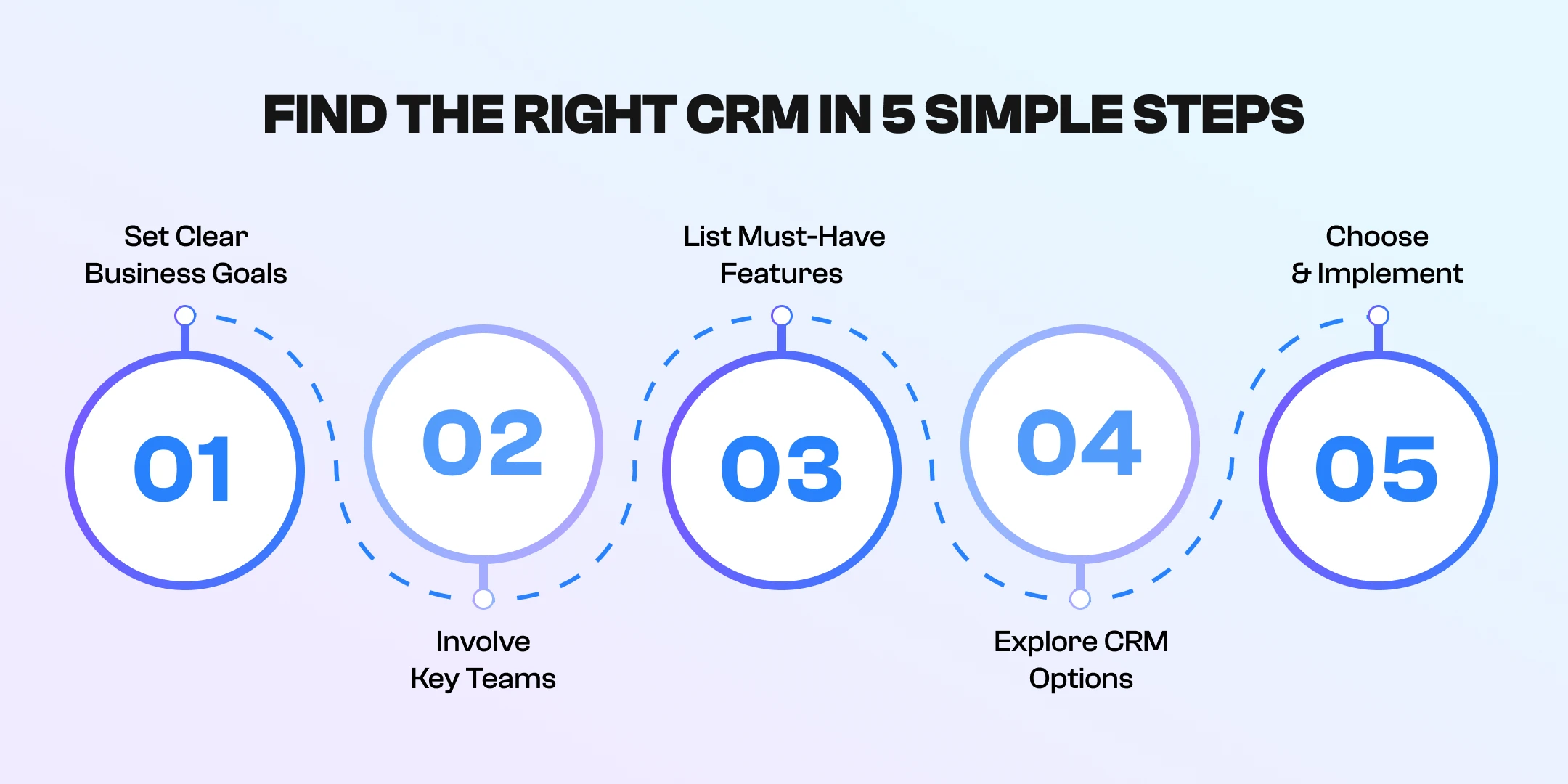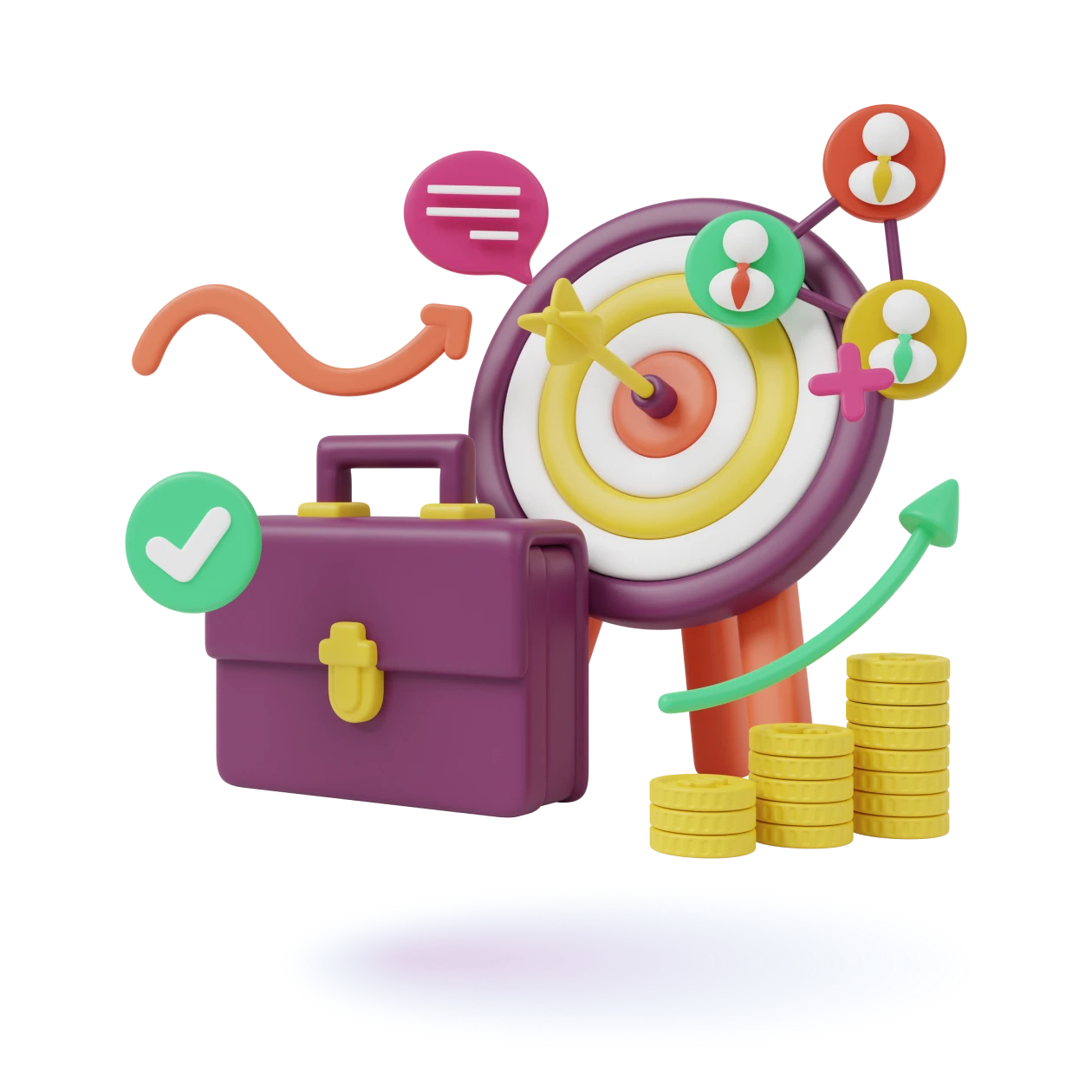I still remember my first big client at SalesAR(lead generation company). Back then, I thought lead generation was all about numbers—hitting daily outreach targets, sending out perfectly crafted email templates, and hoping the right people would respond. One day, after a dozen ignored emails and a few awkward cold calls, something clicked. I stopped trying to sell and started asking real questions. What does this person need? What problem are they stuck with? That shift became my first long-term client—and taught me a lesson I still use today.
If you want to generate leads for business effectively, it’s not just about filling a spreadsheet with contacts. It’s about understanding people, building trust, and showing up with solutions they want. With so much competition online, standing out requires more than automation and volume. It’s about strategy, timing, and empathy—all working together.
Understanding Your Audience—The Foundation
I’ll never forget a campaign I ran early in my career—it was a textbook disaster waiting to happen. We were working with a tech client who wanted to target mid-sized SaaS companies in the US. Sounds clear enough, right? We skipped one crucial step—defining who, inside those companies, actually needed our client’s solution.
We blasted outreach to anyone with a “manager” title in their LinkedIn profile, assuming they could influence the decision. Spoiler: They couldn’t. Half the people we contacted didn’t even understand the product. The response rate was awful, the client was frustrated, and I was left scrambling to fix the mess.
The turnaround came when we rebuilt the ideal customer profile (ICP) from scratch. We got specific, focusing only on heads of product and CTOs at companies struggling with scaling their API integrations. The difference was night and day. With every email tailored to that pain point, meetings started landing almost immediately.
Here’s the truth: businesses with well-defined buyer personas generate 2- 3x more leads than those without. That’s not some marketing cliché—it’s a proven way to generate leads for business with precision and purpose.
As I always tell my team:
“Every successful campaign we’ve run at SalesAR starts with brutally honest conversations about the target audience. Every tactic is noise if you don’t know who you’re talking to.”
If you treat your audience like a vague crowd instead of real people with real problems, your lead generation will always be unpredictable. Start with clarity, and everything else will become easier.
There are countless ways to generate leads for business, but only a few stand out as both scalable and deeply personal.
Proven Strategies for Generating Leads—What Works in Real Life
I’ve been lucky to see lead generation from every angle—from cold-calling marathons to multi-channel campaigns that took months to build. One thing I’ve learned about generating leads for businesses is that tactics only work when built on real insights. When you approach lead generation like a checklist, it falls flat. When you treat it like a conversation, things start to click.
Here are a few strategies that work—real ways to generate leads for business that we’ve seen succeed repeatedly.
Content Marketing: Teaching First, Selling Later
A few years ago, we worked with a cybersecurity client obsessed with cold outreach. They wanted to try everything—emails, LinkedIn messages, even direct mail. But after a few months, their pipeline was still painfully thin. Why? No one knew who they were; their messages were interruptions, not invitations.
We suggested a different approach—instead of chasing leads, we’d pull them in. We created a whitepaper and promoted it through LinkedIn and their website. There was no sales pitch, just valuable insights their audience genuinely needed.
The result? Within 60 days, that one piece of content brought in 40 qualified inbound leads—more than their entire cold outreach campaign. And the best part? These leads were already warmed up because they saw our client as a trusted source, not just another vendor.
It’s not a fluke. Content marketing generates three times more leads than traditional outbound marketing and costs 62% less.
Content marketing remains one of the most cost-effective long-term strategies for companies offering lead generation for business services.

“The best content doesn’t talk about your product. It solves the problems your leads are already losing sleep over.”
That’s what makes content work—it helps before it sells. And people remember who helped them.
Website & SEO: Your Digital Salesperson
One of the most frustrating cases I’ve seen involved a client with an incredible product but a website that worked against them. Visitors landed on their homepage, saw a bunch of generic buzzwords, and left within seconds. There was no clear next step, no real explanation of how they could help, just filler.
We dug into their analytics and found something painful: they were getting traffic but almost zero leads from their site. After a full revamp, we changed two things—added clear, simple calls to action (CTAs) and rewrote the homepage to answer the actual questions their leads had. Instead of vague “innovative solutions” language, we showed how their tool saved teams 20+ hours a month.
It worked—inbound leads doubled within three months, all from the same traffic they already had.
This isn’t surprising, considering the data: 75% of users judge a company’s credibility based on its website design. If your website doesn’t look trustworthy, your leads will not stick around long enough to find out what you do.
“If your website doesn’t feel like a helpful guide, your leads will bounce before you even know they visited.”
Think of your website as your 24/7 salesperson—a key asset when you want to generate leads for business through inbound channels. It should answer questions, show your value, and make it ridiculously easy to take the next step—booking a call, downloading a resource, or signing up for a demo.
Social Media: Meeting Your Leads Where They Already Are
I’ve always believed social media is one of the most underrated lead generation tools, especially for B2B. One campaign I ran for a client still proves that point.
They were a tech consulting firm struggling to break into the fintech space. Cold emails were getting polite rejections (or silence), and paid ads were too expensive for their budget. So, we took a different approach: We ran a simple LinkedIn poll asking fintech leaders about their biggest tech headaches for the year ahead.
Posting took less than five minutes, but what happened next was incredible. Dozens of decision-makers answered, and many left comments explaining their reasoning. Within a week, we had 15 high-quality conversations with exactly the kind of people they wanted to reach—all from one post: no pitch, no hard sell, just a conversation starter.
The numbers back this up: 78% of salespeople using social media outsell their peers who don’t. When you stop thinking of social media as a broadcast tool and start using it to spark real conversations, it changes the game.
Paid campaigns can be particularly effective for those offering lead generation for business services—if the messaging is tightly aligned with the audience’s pain points.
“Don’t treat social media like a billboard—it’s one of the most human ways to generate leads for business. Treat it like a coffee shop where your prospects already hang out.”
Comment on their posts. Ask questions. Share insights they’ll care about. If you show up consistently in a way that feels human, you’ll earn their attention—and, eventually, their business.
Email Marketing: The Power of Follow-Up
One of my favorite client wins came from a list everyone had already given up on. The client had a database of about 200 old leads—people they’d spoken to months ago but never closed. When we started working together, they told me, “That list is dead; don’t waste your time.”
Of course, I didn’t listen.
We built a re-engagement campaign—a simple, friendly email sequence designed to check in, share a helpful resource, and see if their needs had changed. There was no hard sell, no pressure, just a “Hey, we talked a while back—here’s something you might find useful.”
Within two weeks, 30 of those “dead leads” replied, several booked meetings, and a few became paying customers. The best part? These weren’t cold contacts anymore—they already knew the brand, so those deals closed faster than usual.
This works because nurtured leads make 47% larger purchases than non-nurtured leads. Staying on their radar—even after they go quiet—pays off.
“The sale rarely happens in the first email—but it often happens in the fifth.”
Download our free PDF: How do we successfully generate leads for email campaigns?
Most companies quit after one or two touches. That’s a huge mistake. People are busy. Sometimes they forget, and sometimes they’re not ready yet—but if you’re the one who follows up (without being annoying), you’ll be the one they think of when the time comes.

Networking, Events & Referrals: Old School Still Works
Sometimes, the most powerful lead generation channels are the ones people forget about because they’re not shiny or digital. One of the best examples I’ve seen came from a client in the B2B manufacturing space—a harsh, traditional industry where trust is everything.
They weren’t big on digital marketing and had zero interest in cold outreach. However, they agreed to attend a small, highly targeted industry event, where the goal wasn’t to sell but to talk shop with other industry leaders. One casual conversation at that event turned into a referral, which led to an introduction to a second company and a third. That event led to five qualified leads and a major long-term contract within three months.
This is no accident. When it comes to generating leads for business, referrals still outperform many modern tactics. Research shows that 84% of B2B decision-makers start their buying process with a referral. People trust recommendations from peers far more than any ad, email, or sales pitch.
“Personal introductions are gold—and they shorten sales cycles dramatically.”
Whether attending industry events, building relationships with complementary businesses, or simply asking happy clients for referrals, these old-school tactics still work because trust is the ultimate currency. When someone vouches for you, the hardest part of the sale is already done.
Paid Ads: When to Pay for Attention
I’ve seen so many companies swear off paid ads after one bad experience—and I get it. One client said, “We tried LinkedIn ads last year, burned through the budget, and got nothing.” When we looked closer, the problem wasn’t the platform but the targeting and messaging.
They ran broad ads aimed at entire industries, with copy that felt like a cold pitch—no relevance, no real hook. We flipped the strategy and created ads tailored to a niche audience, addressing a specific pain point they knew that segment was struggling with. We also used content (not sales pitches) to open the conversation.
Within a month, those “wasted ads” became a steady stream of qualified leads, including several they would never have reached through email or organic methods. Even better—they uncovered a new audience segment that became a core part of their pipeline.
“Paid ads work when they feel part of the conversation—not an interruption.”
If your ads look and sound like every other “Buy Now!” message flooding your audience’s feed, they’ll scroll right past. But if your ad solves a problem, answers a question, or delivers value upfront, you’ve got a real shot at earning their attention—and their business.
Tools & Technology—What Makes It All Manageable
I’ll be honest—when I first joined SalesAR, our messy tracking was one of the biggest obstacles to consistently generating leads for business. We had random spreadsheets, half-updated Google Docs, and some people keeping notes in their email folders. You’d get three different answers if you asked three different team members where a lead came from or the last touchpoint.
That all changed the moment we fully committed to a proper CRM. Every lead had a home, and every email, call, and LinkedIn message was logged. We could see which channels brought in the best leads and how long each deal took to close. That clarity made us more organized and smarter about where to invest our time and budget.

When your lead generation spans multiple channels—email, LinkedIn, content, ads, events—a CRM isn’t a luxury. It’s the only way to connect the dots and see the full picture.
“One of the biggest lessons? You don’t need a massive budget to generate new leads for business—you just need the right approach and message.”
If you’re still managing leads in scattered spreadsheets, you’re not just making your team’s life harder—you’re leaving money on the table. A good CRM pays for itself by helping you spot patterns, avoid leaks in the pipeline, and focus on the tactics that work.
Common Mistakes & Lessons Learned
If there’s one thing I can say with confidence after years in this business, it’s that I’ve made plenty of mistakes—the kind that make you cringe when you look back. And honestly, those mistakes taught me more about lead generation than any textbook or course ever could.
One of my earliest failures was buying a cheap lead list from a “trusted” provider. It was everything we needed on paper—hundreds of decision-makers in our target industry, all packaged up and ready to go. The reality? It was a disaster. Half the emails bounced, a chunk of the contacts didn’t even work at those companies anymore, and the few who did reply had zero interest in what we were offering. We burned through time, budget, and goodwill—all because we were chasing numbers instead of quality.
Another rookie mistake—and I’ll own this one fully—was thinking that volume was the goal. I used to believe someone would eventually say yes if I sent enough emails. So, I cranked up the outreach, blasting generic messages to anyone with a relevant job title. The results? Predictably awful. Not only did those emails get ignored (or marked as spam), but I also learned that a cold lead who doesn’t feel understood will never become a warm prospect.
And then there’s follow-up—or, in my case, the complete lack of it. Early on, I would send one or two emails; if there was no response, I crossed that lead off my list and moved on. I had no idea that 48% of salespeople never follow up after the first contact. Even worse? Only 25% of leads are qualified and ready to buy when you first reach out. The rest need time, nurturing, and multiple touchpoints before being ready for a real conversation.
What I’ve learned—the hard way—is that every lead has a story. They’re not just data points in your CRM; they’re people with specific problems, internal politics, and decision-making processes.
“Every lead has a story—if you’re not interested in that story, they won’t be interested in yours.”
When you treat leads like faceless targets, they feel it and tune you out. But when you approach them with curiosity, ask the right questions, and listen to the answers, you stop being a sales pitch and become someone they trust.
If I could give my younger self one piece of advice, it would be this: slow down and pay attention. Understand who you’re talking to, what matters to them, and why they might care about what you say. Quality always beats quantity, and the best leads aren’t the ones you chase—they’re the ones you build relationships with.
Measuring Success
For the longest time, we at SalesAR made the same mistake so many companies still do—we measured success purely by lead volume. More leads meant more success, right? Except… it didn’t.
I remember one quarter when we crushed our outreach targets. Hundreds of leads poured in, and our reports looked fantastic—at least on paper. But the truth hit hard when we dug into the results: most leads went nowhere. They weren’t the right fit, didn’t have the right budget, or weren’t even decision-makers.
That’s when we flipped the script. Instead of asking, “How many leads did we generate this week?” we started asking, “How many qualified conversations did we start?” and “How many of those leads turned into the actual pipeline?”
The difference was night and day. The sales team spent less time chasing dead ends; our meetings-to-closed-deals ratio improved, and—this is key—marketing and sales finally stopped arguing over what a “good lead” meant. We sat down, built shared criteria, and aligned on the numbers that mattered.
“Lead generation isn’t a numbers game—it’s a value game. Chase quality conversations, not just contact lists.”
It’s easy to get excited about big numbers—1,000 leads look impressive on a dashboard. But if 900 of them never stood a chance of converting, what’s the point? Focus on who you’re bringing in, not just how many. A handful of right-fit leads will always beat a crowd of “maybes.”
If you measure success by conversations that move the deal forward—instead of inboxes filled with unanswered outreach—your lead generation strategy will go from scattershot to laser-focused. And your sales team will thank you for it.
Results matter—and we love letting the numbers speak.
Check out how we helped these businesses generate leads that converted:
- Foxit Case Study – How we scaled qualified meetings for a global software brand.
- Bulu Case Study – How smart targeting and messaging brought high-value retail leads.
Adapting & Improving
One thing I’ll never believe in is a “set it and forget it” lead generation strategy. At SalesAR, we treat every outreach playbook like a work in progress—because that’s exactly what it is.
Every quarter, we gather the entire team—account managers, SDRs, even the content folks—to review what’s working and what’s not when generating leads for business across all channels and analyze our process. What messaging gets the most replies? Which industries show the strongest interest? Did subject lines with numbers outperform the more conversational ones?
I’ll be honest—those sessions aren’t always fun. Sometimes, we realize a campaign we loved flopped. Other times, a random experiment—like trying voice notes instead of emails—turns into our new best practice. That’s the point: lead generation is never finished.
We’re not the only ones who work this way. 74% of high-performing marketing teams describe themselves as “agile,” constantly adjusting based on the data. Sticking to one playbook for too long in fast-moving industries is like leaving money on the table.
“What works today won’t always work tomorrow—and that’s OK. Test. Learn. Adapt.”
If your lead generation strategy looks the same today as it did a year ago, that’s a red flag. Buyer behavior changes. Algorithms change. New tools pop up. The best teams stay curious, experiment often, and aren’t afraid to ditch what’s not working—even if it worked perfectly six months ago.
At the end of the day, lead generation isn’t a formula—it’s a process of constant learning. Stay flexible, and you won’t just generate leads—you’ll consistently generate leads for businesses that convert.
Conclusion
If there’s one thing I hope you take away from this, lead generation isn’t a checkbox you tick off once and forget. It’s not about spamming inboxes or buying your way into someone’s attention. It’s about curiosity—wanting to understand your audience so well that your message feels less like a pitch and more like an answer they’ve been waiting for.
That’s how we approach lead generation at SalesAR. Every campaign, email, and call starts with a simple question: “What does this person need, and how can we help?”
If you’re wondering how to generate leads for business in a way that works, I’d love to help. Let’s ensure you’re chasing the right leads with the right message in the right way.
Start thinking about your leads as people, not just pipelines. When you get that part right, the results will follow.
We’ll help you start them with the right people, in the right way.

